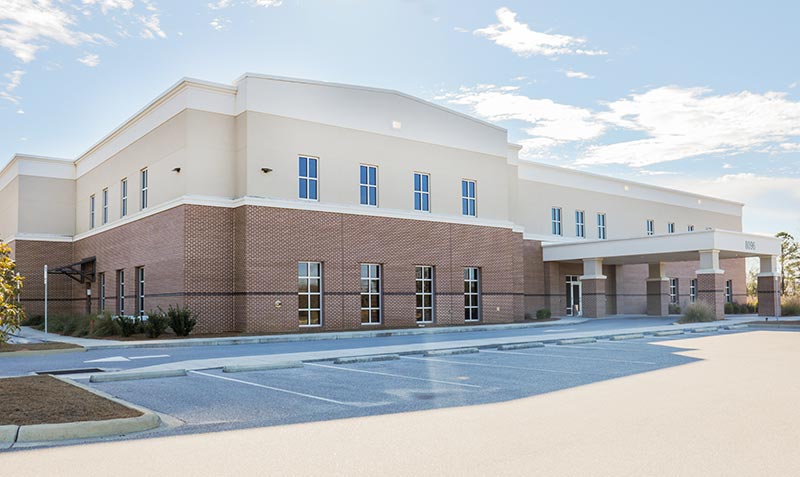Vital Services Offered by Clinics Specializing in Urgent Care
Vital Services Offered by Clinics Specializing in Urgent Care
Blog Article
Understanding the Function of Urgent Care in Offering Timely Therapy for Non-Life-Threatening Problems
Immediate care centers have actually arised as a crucial part of the healthcare landscape, attending to the instant demands of clients with non-life-threatening conditions. Understanding the subtleties of urgent care could substantially influence client outcomes and the total effectiveness of medical care distribution.
What Is Urgent Treatment?
Urgent care describes a classification of clinical services designed to deal with non-life-threatening conditions that need immediate interest. These centers function as an intermediary in between main treatment medical professionals and emergency clinic, supplying a hassle-free alternative for clients that need punctual treatment without the substantial waiting times usually connected with emergency situation divisions.
Urgent treatment centers are generally staffed by doctor, consisting of physicians, nurse professionals, and medical professional aides, who are educated to identify and deal with a large selection of problems. Typical services offered by these centers consist of treatment for minor injuries, diseases, and infections, as well as analysis tests such as X-rays and research laboratory job.
The availability of immediate treatment is a crucial factor in its allure, as many centers operate past normal workplace hours, consisting of weekend breaks and nights. This extensive schedule permits clients to obtain prompt treatment when their main treatment service provider may not come. In addition, urgent care centers commonly approve walk-in patients, removing the need for consultations. Generally, immediate treatment plays an essential function in the health care system, ensuring individuals can access crucial medical services quickly and efficiently.

Numerous people might discover themselves uncertain regarding when to look for care at an immediate care facility as opposed to a health care physician or an emergency room. Immediate care is created to attend to non-life-threatening conditions that need timely focus but are not serious sufficient to necessitate an emergency clinic see.
Generally, one need to consider immediate care for problems such as small cracks, strains, cuts calling for stitches, or infections like urinary system infections. In addition, chilly or influenza signs, breakouts, and sensitive reactions can also be properly managed in this setting.
It is necessary to note that immediate care is not suitable for dangerous emergencies, such as upper body discomfort, problem breathing, or extreme blood loss, which demand prompt emergency clinic treatment.
People that lack accessibility to a medical care doctor or can not secure a timely consultation might additionally take advantage of immediate care solutions. Eventually, recognizing when to make use of urgent care can cause extra reliable medical care distribution, permitting patients to obtain the suitable degree of treatment based on their specific health and wellness requirements.
Benefits of Urgent Care Centers
Picking urgent treatment centers for non-life-threatening conditions offers numerous benefits that improve person experience and accessibility. One main benefit is the decreased wait times compared to standard emergency rooms. Urgent treatment facilities usually operate a first-come, first-served basis, enabling people to receive prompt clinical attention without the lengthy delays frequently related to health center settings.
Furthermore, immediate treatment facilities provide extensive hours, consisting of weekend breaks and evenings, accommodating clients with varying timetables. This adaptability guarantees that individuals can seek treatment when it is most convenient for them, better advertising prompt intervention.

In addition, these centers typically offer a thorough variety of solutions, consisting of diagnostic tests and small treatments, all under one roofing. This loan consolidation of services not just streamlines the patient experience yet likewise promotes a more natural technique to managing non-life-threatening health and wellness concerns, eventually benefiting total patient outcomes.
Common Conditions Dealt With
At urgent care facilities, a range of non-life-threatening conditions can be efficiently dealt with, offering clients with available and prompt clinical help. These centers are particularly proficient at addressing concerns that call for timely interest however do not posture an immediate threat to life or limb.
Typical conditions treated at immediate care centers include small injuries such as stress, fractures, and strains. Furthermore, they take care of illnesses like colds, influenza, and infections, including urinary system infections and sinus problems. Skin conditions, varying from rashes to insect bites, are additionally regularly resolved. Urgent care centers are geared up to perform essential diagnostic tests, such as X-rays and lab examinations, allowing them to provide detailed treatment.
Additionally, urgent treatment carriers can carry out vaccinations, assisting to avoid the spread of contagious conditions - Urgent Care. They also use services for minor treatments, such as suturing wounds or draining abscesses. By using these varied services, urgent treatment centers play a vital function in linking the void between medical care and emergency situation solutions, guaranteeing clients get prompt therapy for a broad variety of conditions without the requirement for long wait times usually related to emergency spaces
Exactly How Urgent Care Supports Health Care System
Urgent care facilities play a critical duty in sustaining the total medical care system by alleviating the worry on emergency divisions and giving timely accessibility to clinical treatment for non-life-threatening problems. By handling situations such as small injuries, infections, and diseases, urgent care facilities permit emergency divisions to concentrate on more critical individuals requiring prompt focus.
In addition, urgent care centers boost health care accessibility, supplying extensive hours and an easier alternative to standard main treatment setups. This ease of access is especially helpful for people who might not have a regular medical professional or who sites require instant treatment outside of common office hours. Therefore, urgent treatment centers successfully minimize wait times and enhance client complete satisfaction.
Furthermore, urgent care centers add to cost savings for both individuals and the health care system by supplying lower-cost services contrasted to emergency situation departments. This monetary effectiveness is crucial in a period of increasing health care expenses, enabling patients to obtain needed care without sustaining excessively high costs.
Final Thought
In final thought, urgent treatment facilities play an important duty in the health care system by delivering prompt therapy for non-life-threatening problems. By linking the gap in between health care and emergency situation spaces, these centers make certain that patients obtain prompt clinical interest without the prolonged wait times typically associated with emergency departments. The accessibility and performance of urgent treatment facilities add substantially to reducing the general problem on health care you could check here resources, boosting person outcomes, and promoting a much more efficient healthcare delivery system.
Urgent treatment centers have emerged as a vital element of the health care landscape, dealing with the prompt demands of people with non-life-threatening problems. Urgent treatment visits generally incur lower out-of-pocket expenses compared to emergency division gos to, making treatment more affordable for individuals without endangering quality. Urgent care facilities are outfitted to perform needed diagnostic tests, such as X-rays and lab tests, allowing them to supply detailed treatment.
By using these varied services, urgent treatment facilities play a vital function in linking the space in between primary treatment and emergency situation solutions, making sure individuals receive go to this site timely therapy for a large array of conditions without the demand for lengthy delay times generally connected with emergency situation rooms.
Furthermore, immediate treatment centers improve health care availability, using extensive hours and an extra hassle-free option to conventional primary treatment settings.
Report this page